


The North Atlantic Arc Home
| September | /Octoberrrrrrrrrrrr |
| S | M | T | W | T | F | S |
| 18 | 19 | 20 | 21 | 22 | 23 | 24 |
| 25 | 26 | 27 | 28 | 29 | 30 | 1 |
| 2 | 3 | 4 | 5 | 6 | 7 | 8 |
| 9 | 10 | 11 | 12 | 13 | 14 | 15 |
| 16 | 17 |
 |
Saturday 15
October 2005Blether, Rhinns, RepeatWe have only one distillery tour today, at 10:30, and we are already on the property. Thus we have some slack time after breakfast, which we use to repack our luggage and the car. It s amazing how much disarray we have been able to achieve in such a short time. Gareth, our guide, handles the full complement of tourists with ease, and this seems the most complete and edifying tour yet. The distillery is not working today, and we are in fact surprised when we peer into the open still and find someone smiling back at us. A bit of repair work going on, apparently. Bruichladdich seems almost like a DIY distillery, with everyone doing whatever it takes to keep the place running. Duncan MacGillivray, clad in coveralls and carrying tools, smiles and waves at us as he passes by. We spoke to him briefly last night in the Port Charlotte. The bottling hall captures our attention. It is not, I am sure, anything particularly amazing as bottling halls go, but it is , by mere virtue of its existence, unique in Islay, and unusual in Scotland. Bruichladdich s shop is the only one on the island that doesn t have to get its bottled stock from the mainland. In the shop, Gareth pours us samples from several bottles, including a recent bottling called Yellow Submarine. He tells us how an Islay fisherman found a banana-colored drone submarine drifting without power, and brought it back to shore. It was plainly marked MOD , so he called the Ministry of Defense, who denied any knowledge of it. So it sat in the fisherman s front garden for most of the summer, until early one morning a mine sweeper pulled into Port Ellen harbor (as if this could be done without anyone noticing) to reclaim it saying, in effect, It s not ours and we re taking it back. Any excuse for a new bottling, says Gareth, finishing the story. There are two Valinch casks in the shop, one available for us to fill our own bottles from, the other one waiting its turn, off limits, we are told. There are also three fill-it-yourselfs from other distilleries, as well as shelves full of various Bruichladdich, Murray McDavid, and Celtic Heartlands offerings. We each fill a bottle from what is dubbed the Tonga Valinch, so named in honor of a visit from Tongan royalty. Actually, I fill two, and also pick up bottles of two previous Valinches from the shelf a Flora McBabe, and what appears to be the last Lord Robertson, named for the son of Islay who served as Secretary General of NATO. I also grab a Yellow Submarine. Jim McEwan, Bruichladdich's garrulous production director, arrives in the shop, and the level of blether increases a hundredfold. He tells the Yellow Submarine story, and, although it is virtually word-for-word the same one that Gareth told, we are amused by it all over again. Certainly none of us is going to tell him to stop. He pours us samples from the forbidden Valinch, a 1989 which has spent 15 years in bourbon oak and 8 weeks in Marsane Hermitage Guigal Blanc. With Mark Reynier s wine trade connections, there will surely be more of these experiments. We ask McEwan to sign our Valinches, which he does directly on the glass with a metallic-ink pen. He botches the J on Bobby s bottle and starts over, saying, A little nail polish remover will take that off. I think to answer, No we now have proof of a mistake by Jim McEwan! but think again and swallow it. He kindly poses for a photo with the five of us Gareth, Bobby, Tattie Heid, Ron, McEwan. It s 1:30 when we finally leave, feeling very warm and happy. We drive out on the Rhinns, past Port Charlotte and down to the pretty village of Portnahaven. It s cloudy, but we walk about and take lots of photos, anyway. The tiny pub in the village, An Tigh Seinnse, serves us a surprisingly good lunch. After, we drive the twisting single-track road around the Atlantic side of the Rhinns, through Kilchiaran, back to Port Charlotte. It s been several years since I went this way, and I d forgotten how ruggedly scenic it is. Then around Loch Indaal, through Bridgend and Bowmore we go, across the long stretch of road floating on the bog, past Port Ellen and out onto the Oa. The Oa is a wild place, seemingly apart from the rest of Islay. The first time I came out here, it was late in the afternoon on a dark, rainy day, and that first apocalyptically gloomy impression has stuck with me. Today is merely overcast, and windy. We drive to the end of the road and then take the circular walk that ends at the American Monument, high on a cliff overlooking the violent sea. It s yet another extremely windy walk for me. Standing on the Mull of Oa, we can see a spot of sunlight out on the water, but it will not move. In the haze, we unfortunately cannot make out the Irish coast, normally visible from here, or even Kintyre. Back near Port Ellen, we take the side road to Kintra, at the southern end of the long strand on Laggan Bay. The beach is nearly five miles long, but we have only fifteen minutes before sunset, and get only the briefest taste of it. The red ball of the sun, unseen all day, descends from the cloud and sinks into the bay. We have a pint at the Machrie Hotel. The place is not so formal as we d feared, but still we forego dinner there in favor of the familiar Port Charlotte. Fraser is tending bar tonight, and we are sure we will not have to endure any endlessly repeating CDs. We have our last pints and drams in Islay and retire early. Next |
 |
The lads on Bruichladdich pier, looking none too cheerful the morning after the night before.
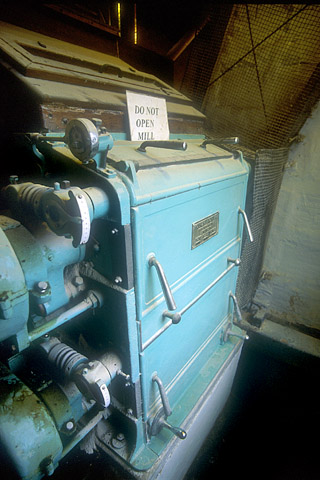 |
 |
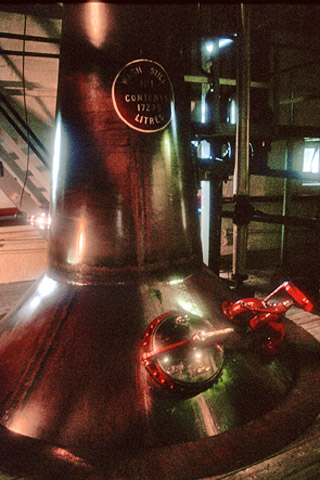 |
Bruichladdich's Boby mill, and two views of the stills.
 |
On tour at Bruichladdich.
 |
Wine barrels await the next ground-breaking finish.
 |
 |
Bobby fills his Valinch (and does the Hokey Pokey), and Ron fills his. Ron spilled a good dram's worth on the floor. Shame!
 |
The lads look much happier now, after a few mid-day samples. From left to right:
Gareth the guide, Bobby, Mr Tattie Heid, Ron, and Jim McEwan. Spike at the window is looking to pillage some malt.
 |
Spike gets his malt!
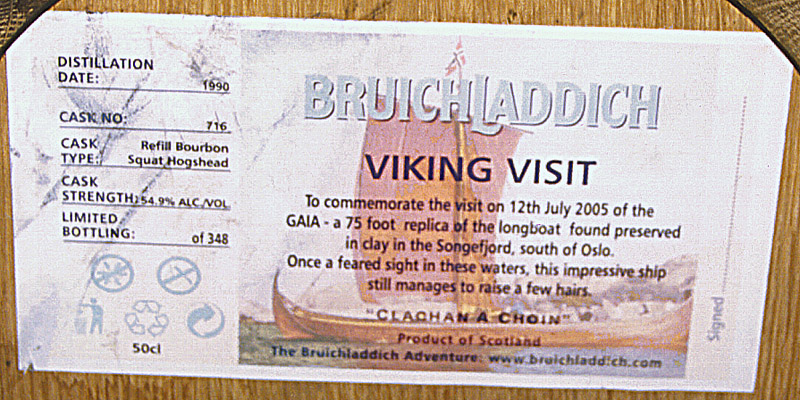 |
The Viking Visit cask. (Who you calling a squat hogshead?)
 |
On the lawn after the tour.
 |
The chalkboard outside An Tigh Seinnse proclaims it the best pub in Portnahaven. Who can argue?
 |
The lads enjoy a pint of Belhaven's Best.
 |
The lads emerge, none the worse for the wear.
 |
The back road from Portnahaven to Port Charlotte, via Kilchiaran, with the omnipresent Paps of Jura.
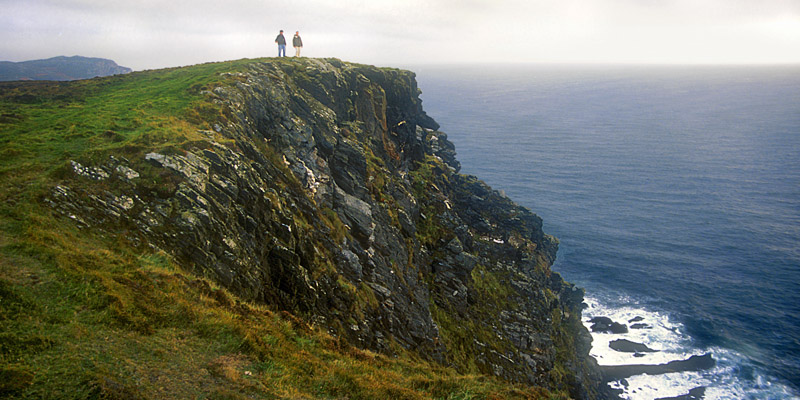 |
Bobby and Ron on the cliffs on the Oa.
 |
The sun sets...
 |
...on the beach...
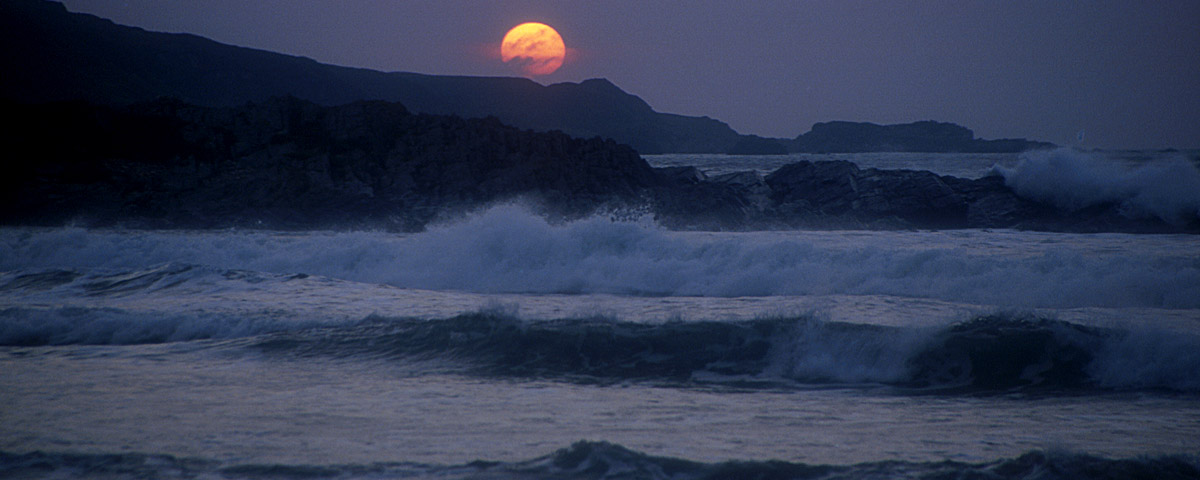 |
...at Kintra.
Next
| September | /Octoberrrrrrrrrrrr |
| S | M | T | W | T | F | S |
| 18 | 19 | 20 | 21 | 22 | 23 | 24 |
| 25 | 26 | 27 | 28 | 29 | 30 | 1 |
| 2 | 3 | 4 | 5 | 6 | 7 | 8 |
| 9 | 10 | 11 | 12 | 13 | 14 | 15 |
| 16 | 17 |
The North Atlantic Arc Home

Mr Tattie Heid's Mileage
Results may vary
MrTattieHeid1954@gmail.com